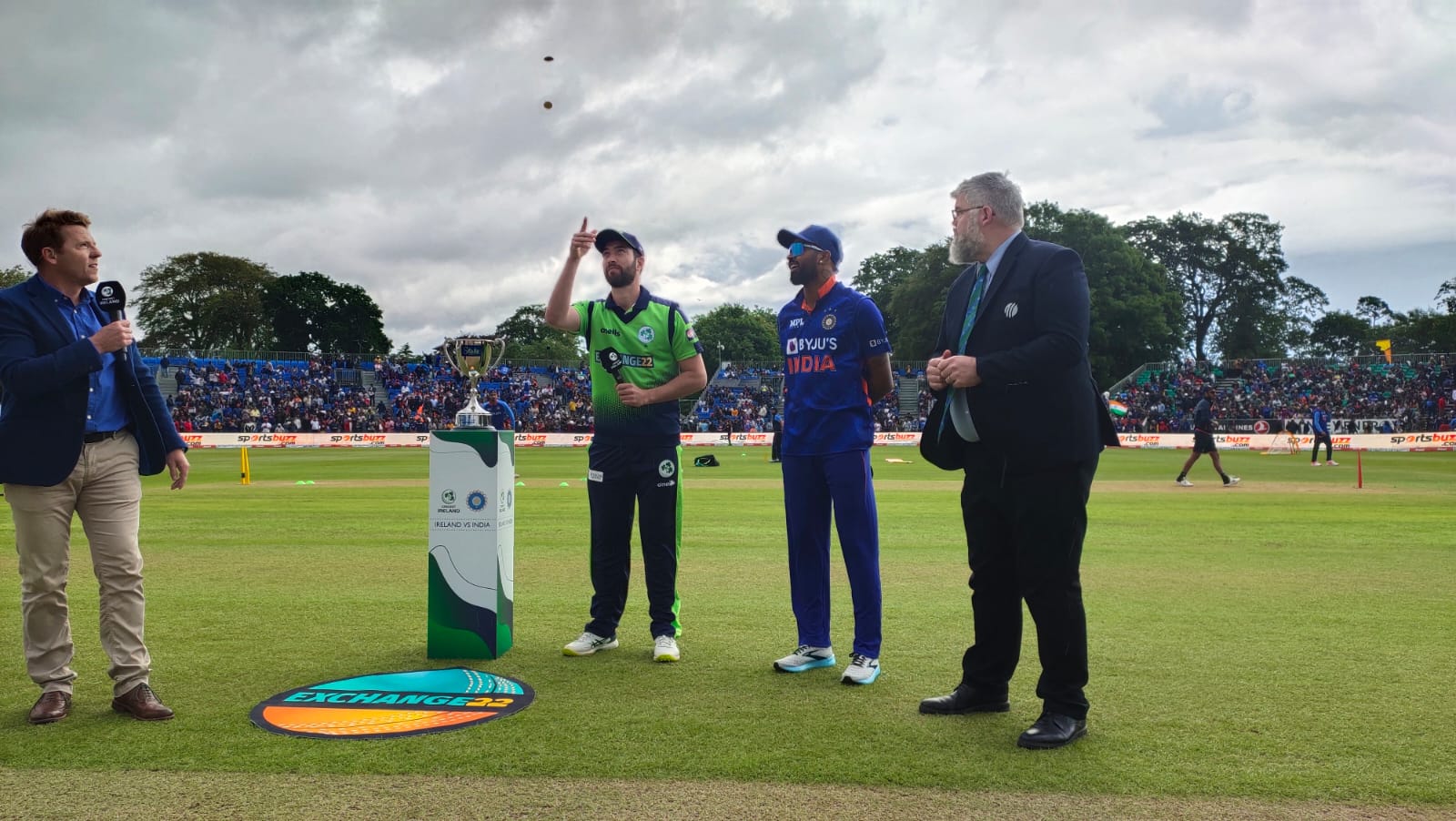The 1st T20 of India vs Ireland was delayed due to rain. The Indian skipper Hardik Pandya won the toss and has elected to bowl first.
Also Read: 1st T20I: Umran gets debut Surya returns for India vs Ireland
In all probability, if the rain stops now, the match is going to be shorter, with no. of overs reduced in both the innings. Here’s how the umpires calculate how many overs will be played out if the match is interrupted by rain:
1. If the match is delayed because of rain at the beginning:
The no. of overs to be played in each innings is decided by the time lost in the interruption. In a T20 match, bowling teams are required to finish each over in three minutes and 45 seconds.
The match referee calculates the time lost due to rain, converts it into overs lost and then divides it into half. The each half of no. of overs is then deducted from each innings.
Also Read: India vs South Africa series ends in a draw: 3 key takeaways
For e.g., if 25 minutes are lost due to rain, this amounts to a loss of 6 overs. Thus, 3 overs are deducted from each innings and the match is reduced to 17 overs per innings.
2. If rain interrupts the match in between:
If rain plays spoilsport between the match, be it in the 1st innings, 2nd innings or in the break, the no. of overs to be played is decided by the Duckworth-Lewis-Stern Method (DLS Method).
Resources are the D/L method’s core concept. The number of overs they must receive and the number of wickets they have in hand are considered to be each team’s two “resources” that must be used to their advantage in order to score as many runs as possible. The mix of these two resources that a team has remaining determines how many runs they can score at any one point in any inning. The availability of these resources and a team’s ultimate score have a very strong correlation when looking at historical scores, a correlation that D/L takes advantage of.
Also Read: Pandya explains plans ahead of India captaincy debut
The aim for Team 2 to win is this number rounded up to the next integer, and the score to tie (also known as the par score) is this number rounded down to the preceding integer if, as is typically the case, this “par score” is a non-integer number of runs. Team 2 will have won the game if they achieve or surpass the target score. When Team 2 has precisely reached (but not exceeded) the par score, the game is tied. Team 2 will lose if they fall short of the required score.
The formula is:
Team 2’s Par Score
= Team 1’s Score x (Team 2’s resources/Team 1’s resources)
Also Read: Want a T20 World Cup spot? Bang the door down, says Rahul Dravid
Take the 5th T20 of India vs South Africa to better understand it. Rain interrupted the match at 7pm just as the players were about to enter the field. It drizzled for around 8 minutes. This came out to be a loss of 2 overs. Thus, the match was reduced to 19 overs-a-side.
After some time, it began to rain again. Thus, the reduced no of overs would have been calculated by DLS Method. Unfortunately, it never stopped raining. In cases like these, the match referee sets a ‘cut-off time’. If the rain falls to stop pouring by the cut-off time, the match is called off. In the 5th T20, it was 10:02 pm IST. Had rain stopped before 10:02 pm, play would have resumed to 5 overs-a-side (the minimum no. of overs to be played). But that was not to be the case and the match was ultimately cancelled.







